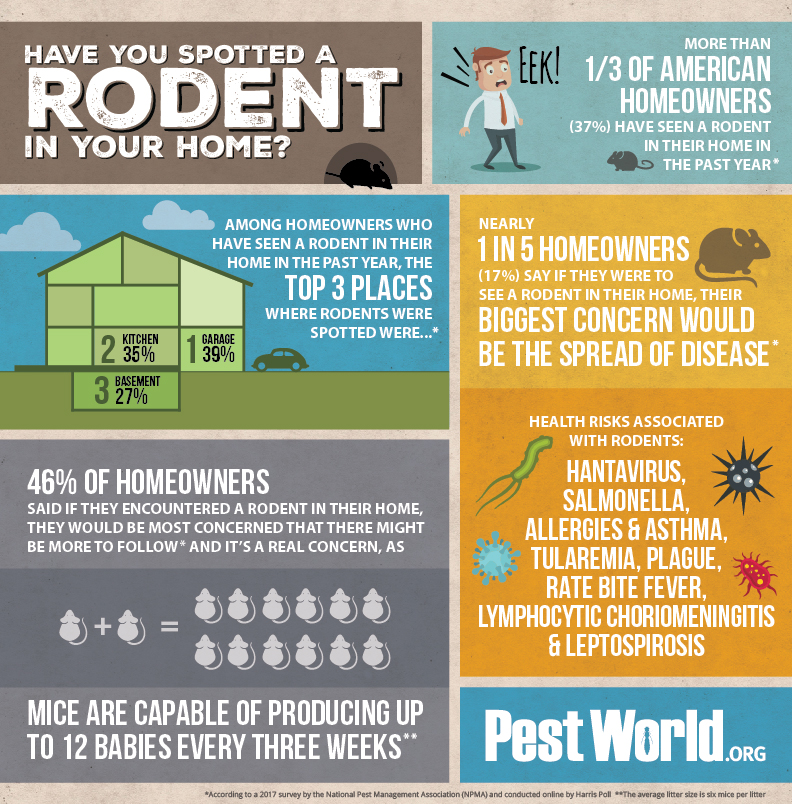Acquiring Expertise On How Rats Behave Is Important For Successfully Regulating Bug Infestations. Specialists Give Useful Understandings On This Matter
Acquiring Expertise On How Rats Behave Is Important For Successfully Regulating Bug Infestations. Specialists Give Useful Understandings On This Matter
Blog Article
Personnel Writer-Berg Skovsgaard
Think of having the ability to expect the moves of your opponents in a video game of chess, always staying one step ahead.
In the world of parasite control, comprehending rodent actions is like having that tactical benefit. By acquiring professional understandings into the nesting habits, feeding patterns, and communication and social behavior of rodents, you can efficiently deal with these pesky animals.
But how exactly do rodents act, and why is it essential to recognize? In this discussion, we will unwind the enigmas of rodent behavior, giving you with beneficial knowledge that will certainly help you remain in advance in the fight versus pests.
Are you ready to discover the secrets of these cunning creatures?
Nesting Behaviors
To comprehend rodent habits and effectively control pests, it is necessary to obtain understanding right into their nesting habits.
Rodents, such as computer mice and rats, have a natural instinct to find shelter and develop nests where they feel secure and protected. These nests act as their homes, reproducing premises, and storage locations for food. Recognizing their nesting behaviors can aid you determine prospective locations of problem and carry out targeted control measures.
Rodents usually like nesting in dark, private rooms, such as attic rooms, basements, crawl spaces, and wall surface voids. https://money.com/best-pest-control/ make use of products like shredded paper, fabric, insulation, and also chewed-up electrical wires to develop their nests.
Feeding Patterns
Rodents display unique feeding patterns that play an important duty in their behavior and can educate efficient parasite control approaches. Understanding these patterns is important for executing effective bug control steps.
Rodents are opportunistic feeders, suggesting they'll consume whatever food is easily available. https://riveraqhxm.qodsblog.com/25874703/one-of-the-most-typical-pests-and-just-how-specialist-pest-control-specialist-services-can-remove-them prefer high-calorie foods such as grains, nuts, and seeds. This is why appropriate storage of food and waste administration are critical in protecting against rodent problems.
In addition, rats are nocturnal, which suggests they're most active during the evening when they look for food. By knowing their feeding patterns, you can strategically position catches and baits to maximize their performance.
Keeping food sources inaccessible and keeping a tidy environment can help deter rodents and lessen the threat of problem.
Communication and Social Behavior
Recognizing how rodents interact and engage socially is vital for efficient bug control strategies. Rats, like mice and rats, have complex interaction systems that they utilize to convey info to every various other and coordinate their tasks. Below are three essential elements of rodent interaction and social habits:
1. Articulations: Rodents produce a large range of singing sounds, consisting of squeaks, tweets, and chattering, to communicate with each other. These articulations can share various messages, such as threat warnings or mating phone calls.
2. Scent noting: Rats use scent glands to leave chemical signals on things and in their environment. These scent marks function as territorial borders and communicate info about reproductive status, prominence, and social association.
3. Social hierarchy: Rodents have a hierarchical social structure, with leading individuals having access to sources and preferred nesting sites. Understanding this hierarchy is necessary for targeting insect control initiatives and identifying crucial people for removal.
Conclusion
So, there you have it - a brief peek right into the remarkable globe of rodent habits. By recognizing their nesting habits, feeding patterns, and interaction, we can better take on the issue of insect control.
Did you recognize that a women computer mouse can create up to 10 litters each year, with each litter including around 5-6 pups? great post to read of prompt and effective insect monitoring to stop rodent populations from spiraling unmanageable.
